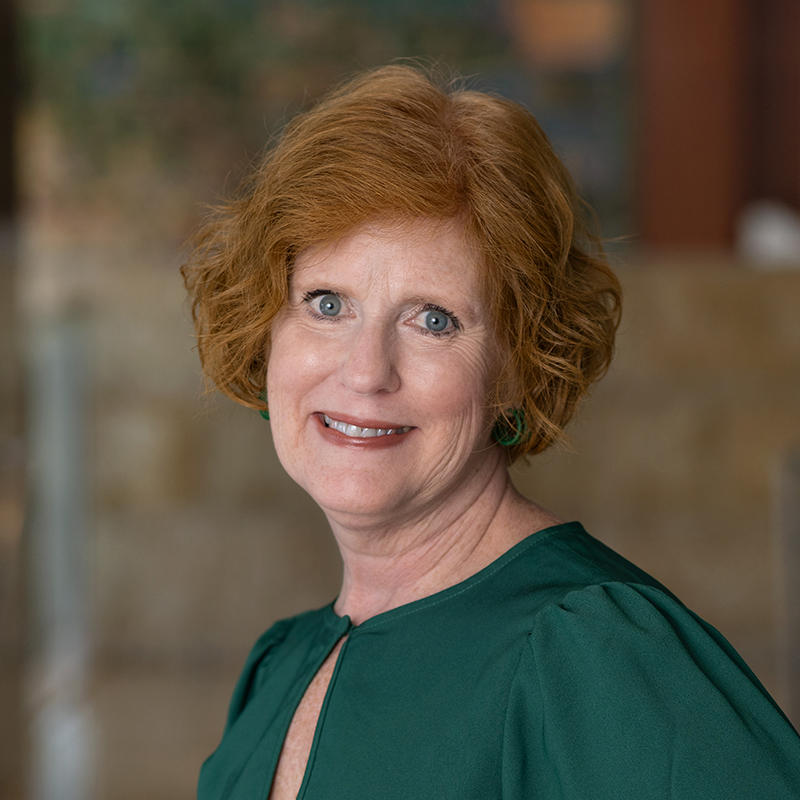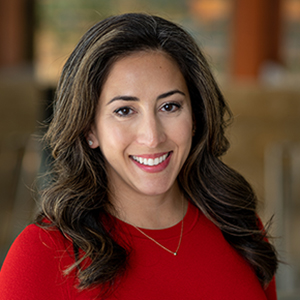
Twenty-five women economists met May 17-18 at the University of California, Santa Barbara, for the First Women in Macroeconomics Conference. Alessandra Fogli, senior research economist at the Minneapolis Fed, was a conference co-organizer. Doireann Fitzgerald, also a Minneapolis Fed senior research economist, presented her research on “How Exporters Grow.” And Minneapolis Fed monetary advisor Cristina Arellano was a discussant on international macro. We sat down with these three Minneapolis Fed economists to learn more about this groundbreaking meeting. Comments have been edited for length and clarity.
Interview conducted June 5, 2018.
Too few women in economics?
Amy Phenix: The conference generated a lot of buzz. Clearly, concern about a lack of women in economics is a hot topic.
Alessandra Fogli: It’s a hot topic, but it’s also controversial.
Amy: That’s interesting. Why is it controversial?
Alessandra: Because it’s not clear what the optimal number of women in economics is, and not everyone agrees that we need more women in economics. Still, we can definitely say that the current number is very low, especially in macro. This low number may represent an obstacle for women in economics to be as successful as their male counterparts and, therefore, may discourage some talented women from choosing economics.
The idea here is that women are probably underrepresented, especially in some fields, like macroeconomics. As a result, women may have fewer opportunities for mentoring and networking, and so they may also have a harder time climbing the ladder, which is competitive and a hard ladder to climb. The lack of role models and other women in the profession can actually make it even harder for the few that are around.
Doireann Fitzgerald: A study of the NBER Summer Institute conferences showed women’s participation on panels or as speakers was about 15 or 20 percent, though it varied across fields.
Cristina Arellano: Macro is actually on the low side, with macro finances on the low side, and the more applied macro fields are higher. It’s never really super high, but there’s a gradient that ranges from single digits to probably 50 percent in some groups, but is, on average, just 20 percent. Probably the fraction of women who present at NBER is about the fraction of women who write papers at the level of the conference.
Doireann: Male economists rarely walk into the room and think, “Oh, I’m in a minority here.” Most of us have that experience every single time we go to a conference, and other sorts of minorities have that experience too. Maybe it doesn’t stop you from doing your job, but it’s kind of an eye-opening moment to walk into the room and see and feel that you are actually in the majority. This looks different. I was involved in organizing a conference several years ago, and when we realized it was 50/50, that was also sort of an eye-opening moment because it is not the norm.
Conference: Genesis and experience
Amy: What was the genesis of the First Women in Macro conference?

Alessandra: The idea that there are few women, and especially few in macro, was the starting point. I have participated in several conferences where I was the only woman, or one of just two, and I’m sure Cristina and Doireann have too. At the SED [Society for Economic Dynamics] last year—it’s a larger conference with a better representation of women—a number of women attending were able to find each other and have a great conversation over dinner. We thought about how enjoyable and refreshing it was to talk about the papers and to catch up, and we asked ourselves why this was not a more standard experience during conferences. Why can it not be more inclusive and enjoyable to be interacting with other economists?
As we looked around the table that night, we realized there are a really impressive number of successful senior women, and we felt that it was enough at this point to have a conference that was high profile, and just women.
Amy: All of you participated. What was your experience at the conference?
Alessandra: As one of the organizers, I wanted to see how it was going to work. Would the dynamics be different? Are women going to enjoy presenting and interacting with other women? The objective was to organize a high-profile conference just as the ones we’re used to going to, but with the difference that instead of having all men, you have all women. The rationale was that in this environment, women would have more opportunities for informal interactions and networking.
Cristina: Conversations between peers are a key component of generating ideas that form the basis for research and publishing. When you are talking to a colleague and an idea comes up, you keep talking and then maybe a paper, maybe a great paper, results. That’s the way papers are generated, and potentially that’s what leads to success: having a good idea with some good co-authors who can write something interesting.
Doireann: So, in this context, an important element of the conference was informal networking and conversations. Although we all have both male and female colleagues and co-authors, these informal interactions go beyond economics. For example, when guys [male economists] get together to play soccer, perhaps, on the sidelines maybe a productive idea is discussed. When you don’t have the opportunity to participate in these informal interactions, because your side interests are different—not soccer or golf or cycling, for instance—it’s harder to participate in shaping ideas.
What I experienced was that there was time during lunches, dinners and informal activities to talk about potential ideas with potential co-authors. I’m not saying that we’re going to write a paper, but we just had an opportunity where everybody somehow felt at ease and was engaging socially.
Alessandra: There was a lot of positive excitement. Everyone put forth their best efforts for the success of the conference. We had great presentations, insightful discussions and lively interactions. I think there was a sense of purpose going beyond personal and professional recognition.
At many conferences, the few women that are present may choose to stay quiet in an environment that is dominated by men. The prevailing way of interacting can be more aggressive than some women are comfortable with. At this conference, women interacted more than usual, and their interactions, albeit lively, were more collaborative and supportive of each other’s work.
Doireann: I would say it’s not that women are less aggressive, but maybe they’re less likely to be aggressive when they are in a minority of 10 percent in a room, compared to when they’re in a majority in the room. Some of the research on gender differences and competition shows that women are much more likely to be competitive when they’re competing with other women than when they’re competing in mixed groups. I wouldn’t say that conversations, the dynamics in terms of the presentations, were any different from the usual at a conference, but maybe the women are more likely to speak up and ask tough questions and push people in an environment where they are a majority.
Reaction from others
Amy: When you announced the conference, what was the reaction from the broader economics community?
Alessandra: I talked to Peter Rupert and Finn Kydland at the University of California, Santa Barbara. They are directors of LAEF, Laboratory for Aggregate Economics and Finance. As directors of LAEF, they have hosted several high-profile conferences in macro (some of which I have attended), and I asked them whether they would be interested in our project. They both were very supportive and provided generous sponsorship.
Finn is a Nobel laureate from Norway and mentioned, during his opening remarks, how his country has a very different gender role balance. His hope was to improve women’s representation in economics in the U.S. Since our conference took place on the national Norwegian Constitution Day, he also hosted a very nice Norwegian-themed reception at his house.
I’m sure that there are some people who are skeptical about whether there is clear evidence that we need anything like this [women-only conference]. But I think the idea of supporting the best work possible and eventually supporting the new generation to do their best work in an environment that is encouraging, that is positive, even enjoyable is important. It’s a good thing for economics because it actually brings more talent to the field, and it should be welcomed.
Amy: Did you worry that maybe an all-women’s conference would be perceived as the lesser conference or that somehow it might become stigmatized for that?
Cristina: No. I’m from Latin America, I’m Hispanic, so there’s a whole theme of diversity there. But we want to avoid the thing of “she was invited because she was Hispanic.”
Alessandra: Right! Check the box. Check two boxes!

Cristina: Exactly! And that’s not what this was. This is about hard work, good work. Personally, I do not want affirmative action for women. I’m not for that at all. This is about good research and networking opportunities and mentoring because there’s all this talent. We want the best people in our profession. We love economics; we want the best women in the profession. So there’s all this potential that perhaps conferences like this can tap into.
Alessandra: That’s where I think we can make a little bit of difference in providing a positive environment that can encourage those who are on the margin. We had a lunch presentation by Linda Tesar showing that at the undergraduate level women are already discouraged from choosing economics.
Agenda and invitees
Alyssa Augustine: How did you plan the agenda—what you wanted to talk about, who you wanted to gather? Was it a formal open call for papers or more informal?
Alessandra: I organized this with Veronica Guerrieri, a co-author of mine, and Marina Azzimonti, who serves as the secretary for the SED. We talked about having a call for papers, but we didn’t have a lot of time, so we decided to have something small and invite people directly. I think of it as a pilot experience to see what works and what doesn’t. We wanted to keep it high profile and have a good mix of senior and junior presenters.
It was focused on macro generally because we wanted to be inclusive, but also because there are so few women in macro. We covered a broad range of macro, including women working in international, trade and finance. We invited a number of high-profile women to make the conference interesting and high quality. And we especially wanted to bring in the new generation of women, junior ones who have very few role models in their own department and very few mentoring opportunities.
As for the invitation list, we thought about who is working in the area, who would be a good discussant, trying to balance having enough experts in each field with the range of fields. We also tried to include a significant range of experiences, women at different stages of their career, because there are topics—when it comes to tenure, work-life balance and other experiences—that are more typical or different for women in the profession. Basically, that was the goal: to include as many women as possible. Be inclusive, but don’t make it so big that participants couldn’t have opportunities for good interaction and informal socializing.
Questions and preparation
Amy: Did you find that the participants asked a different kind of question than at typical conferences?
Cristina: No. It’s the same questions, the same preparation as other conferences.
It was a group of people that are very high profile, so I put effort into my discussion and tried to do a good job. In my personal view, the conference, the content, the discussions were similar to any other high-level conference. But I think it was very different—we all enjoyed it more because we were able to have other interactions.
Alessandra: I think we lose women in the profession because they have fewer interactions and less mentoring, but also because they may have less fun in the process. That is important because our work is not just a 9-to-5 job. It’s our life. These not just my colleagues, they are my friends. Women want to have an experience that is positive and self-reinforcing. It’s hard to work in isolation, especially when it comes to doing research, which is highly collaborative.
A success?
Alyssa: Do you consider this year’s conference a success?
Alessandra: I am very happy with how it went. We had an amazing reaction from the participants. We started a mailing list to decide what we can do next, where to find funding, et cetera, and the feedback was very positive. It was clear that everybody was doing great work, but maybe what was different here is that they were also enjoying more the process.

Doireann: It would have been nice if we’d gotten more ideas about how to mentor more junior people and graduate students.
Alessandra: One thing that was striking to me was a chart that showed the level of job satisfaction in different fields, comparing males and females. Economics was the field with the largest discrepancy in job satisfaction, and I think it is due to the fact that we women socialize in different ways and often discuss different topics. Always being outnumbered can make the experience less rewarding and the field less attractive for the new generations. I wish I'd had an opportunity like this conference when I was a junior.
The future, if ratios change
Alyssa: What will the future of the field look like if these male/female ratios start to change? Will the things that the profession is thinking about change fundamentally if there are more women?
Alessandra: There might be a little change. I’m not an expert, but I saw data suggesting that women and men economists sometimes have different ideas about policy intervention, about the relevance of topics. So maybe having more women may eventually bring some extra attention to topics or policies that have not been central. We all use the same methodology, the same framework. But the profession might eventually see things under a different light if there are more women.
Economics is not always “things are absolutely true or false”; there are a lot of arguments, and some things are true under some assumptions and not under other assumptions. What is plausible and what is relevant is not always written in stone. So there is room for different points of view to enrich the conversation.
Cristina: Linda [Tesar] was talking to us about trends. In many STEM [science, technology, engineering and math] fields where the ratio of women to men has been very low, lower than economics, the ratios have been climbing quite a bit recently. But for economics, it has been flat for, I think 20 or 30 years, so it’s not really changing. And, in fact, currently some of the data suggest a downward trend. So, right now, we have a smaller pipeline. The future is looking worse.
Doireann: One of the things that Linda pointed out is that undergraduate women in particular are opting out of economics.
Alessandra: Having more women who are role models and leaders can help. There is a bias out there; people tend to think that leaders have to look and talk in a certain way. Given this implicit bias, if you want to change the numbers, you have to work on it. If you keep things the same, they’re going to look the same 20 years from now.
So, I think that together, men and women should make an investment into providing an encouraging environment for the next generation of students. I’m really positive because I think there has been a generational change—not just among women, but among men as well. That is going to be important to change the way economics is perceived by the younger generation.
But, as I said, we need to actually invest a bit. Because some of our colleagues will organize a conference and think about the obvious names that are their friends. Then the list is going to be representative only of men of the same age sharing the same interests. So you need to take the additional step and think about names that are not on the radar. We need to make an extra investment; it’s not free. Are we willing to bear that cost? Do we think there is a benefit? I do, but it’s a question out there for the rest of the profession to answer.
Doireann: To include women, you don’t have to compromise on quality. There are a lot of people out there. They just may not be so salient because they’re not your buddy because you didn’t go for beers or play football with them. Conferences like this are a way to say, “Look, these people are out there.”
A second conference?
Amy: So, it sounds like there might be a second women’s macro conference.
Alessandra: Yes!
Doireann: I’ve started putting together a list of women in international trade economics. We don’t want to miss out on anyone who’s not yet on the radar.
Cristina: We’ll definitely be having another conference.
Alyssa Augustine oversees social media and digital engagement, leads the Bank's content strategy, and manages media relations for President Neel Kashkari and other Bank leaders. An experienced TV journalist, Alyssa also contributes articles to the Bank's website and publications.






